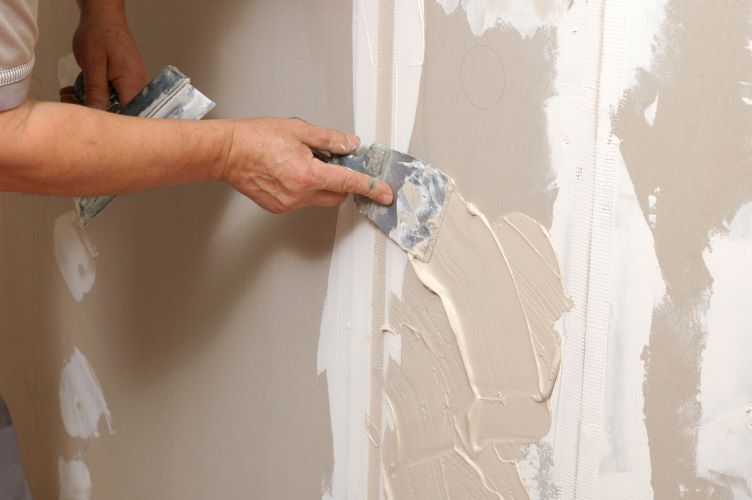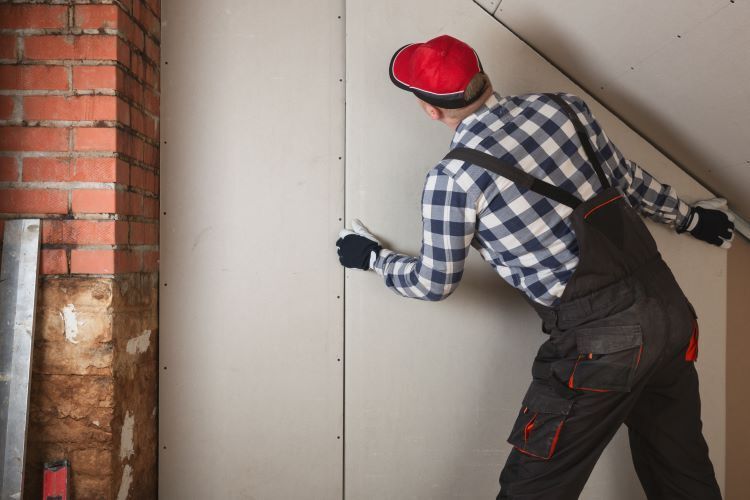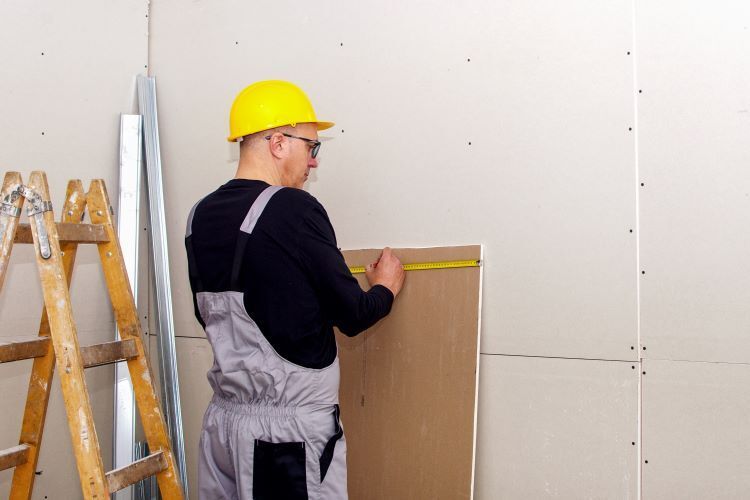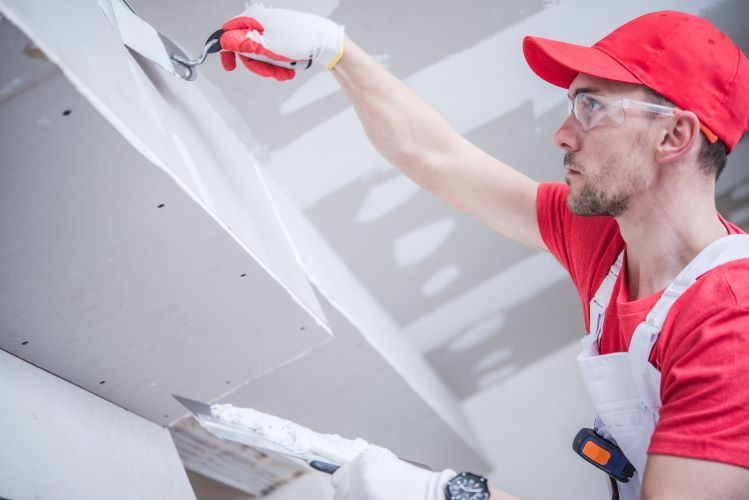The Purpose of Mudding Drywall

When it comes to drywall installation, the final touches can make all the difference. One of the most essential steps in the drywall finishing process is mudding—the application of joint compound to create a smooth, seamless surface. At Barrie Drywallers, we understand that the success of any drywall project hinges on the quality of the finishing work, and mudding plays a crucial role in achieving a professional look.
In this blog, we’ll explore what drywall mudding is, why it’s so important, and how it contributes to the overall durability and appearance of your walls.
What is Drywall Mudding?
Mudding drywall refers to the application of joint compound, often called "mud," over the seams and fasteners of drywall sheets. The goal is to fill in the joints where the drywall panels meet and to cover screw holes or other imperfections. The mud is applied in layers, typically with a taping knife or a trowel, and then sanded down once dry to create a perfectly smooth surface.
Mudding is a multi-step process that includes:
- Taping the Seams: Drywall tape, either paper or mesh, is embedded into the joint compound to strengthen the seams.
- Applying Multiple Coats of Mud: Three coats of mud are usually applied—each layer getting progressively wider and smoother.
- Sanding: Once the mud is dry, the surface is sanded to remove any bumps or ridges, leaving a smooth finish ready for painting.
The Purpose of Mudding Drywall
Mudding serves several important purposes that go beyond aesthetics. Here’s why mudding is a critical step in drywall finishing:
1. Creating a Seamless Surface
The primary purpose of mudding is to cover the seams between drywall panels. Even when installed carefully, drywall sheets leave visible joints that can ruin the look of your finished walls if not properly addressed. By applying joint compound and embedding tape, these seams become invisible, giving the wall a clean and seamless appearance.
2. Hiding Fasteners and Imperfections
Screws and nails used to attach drywall to the framing can leave small indentations in the surface. Mudding these areas conceals the fasteners, creating a smooth and even surface. Mudding also helps to cover minor imperfections, such as dents, gouges, or small cracks, ensuring that the finished wall looks flawless.
3. Strengthening the Drywall Seams
Taping and mudding are not just cosmetic—this process also reinforces the seams where drywall panels meet. Without proper taping and mudding, these joints are vulnerable to cracking and separating over time, especially in areas prone to shifting or settling. The mudding process ensures that the seams are durable and long-lasting.
4. Preparing the Surface for Paint or Wallpaper
A well-mudded wall provides the perfect base for any wall finish, whether you plan to paint or apply wallpaper. The smooth, even surface created by mudding allows paint to adhere evenly, preventing issues like uneven texture or visible seams from showing through the finished product. Without proper mudding, the imperfections would become even more noticeable after painting or wallpapering.
5. Enhancing Fire Resistance
In some cases, drywall mud can also improve the fire resistance of your walls. This is especially true if you're using fire-rated drywall, known as Type X, which is often required in areas like garages or commercial spaces. Properly mudding and taping the seams helps maintain the fire-resistant properties of the drywall, which can slow the spread of flames in the event of a fire.
The Mudding Process: Step-by-Step
Achieving a perfect drywall finish through mudding requires patience, skill, and attention to detail. Here’s an overview of the typical mudding process:
Step 1: Applying the First Coat of Mud and Tape
Once the drywall is installed, the first coat of joint compound is applied along the seams. The drywall tape is pressed into the wet compound, embedding it into the surface. The purpose of this step is to strengthen the joint and cover the seam.
Step 2: Applying Additional Coats of Mud
After the first coat dries, a second, wider layer of mud is applied over the tape. This coat smooths out the joint, blending it with the surrounding drywall. A third coat may be applied to further smooth and feather the edges, ensuring that the seam becomes completely invisible.
Step 3: Sanding the Surface
Once all coats of mud have dried, the surface is sanded to remove any imperfections, such as bumps or ridges. This step requires care to avoid sanding too much, which could damage the drywall. The goal is to create a perfectly smooth surface that’s ready for finishing.
Step 4: Final Inspection
After sanding, the surface is inspected for any remaining imperfections. If necessary, touch-ups are made with additional mud or sanding to ensure that the wall is flawless.
Common Mudding Mistakes to Avoid
Mudding drywall is a skill that requires experience and technique. Here are a few common mistakes to avoid:
- Applying too much mud: This can result in excessive sanding and a lumpy finish.
- Not feathering the edges: Failing to feather the edges of the mud can leave visible ridges, which are noticeable after painting.
- Insufficient sanding: Skipping or rushing the sanding process can lead to an uneven surface, which will show through the final coat of paint.
- Improper taping: Not embedding the tape correctly into the mud can lead to weak seams that may crack over time.
Why Choose Barrie Drywallers for Your Drywall Finishing Needs?
At Barrie Drywallers, we take pride in delivering top-quality drywall finishing services, including expert mudding and taping. Our skilled professionals understand the nuances of drywall finishing and are committed to creating smooth, durable surfaces that stand the test of time.
Whether you're building a new home, renovating a room, or repairing damaged drywall, our team has the experience and expertise to ensure flawless results. We use the best materials and techniques to provide seamless finishes that enhance the appearance and value of your home.
Conclusion
Mudding drywall is an essential step in achieving a professional, polished look for your walls. From covering seams to creating a smooth surface ready for paint, mudding ensures that your drywall installation is not only aesthetically pleasing but also durable and long-lasting. At Barrie Drywallers, we specialize in drywall finishing services, ensuring your walls are seamless, strong, and ready for whatever comes next.
If you're planning a drywall project in Barrie, Ontario, contact Barrie Drywallers today for expert advice and professional finishing services!
You Might Also Enjoy:



Contact Us!
